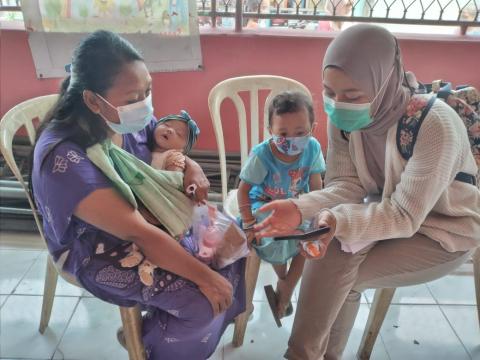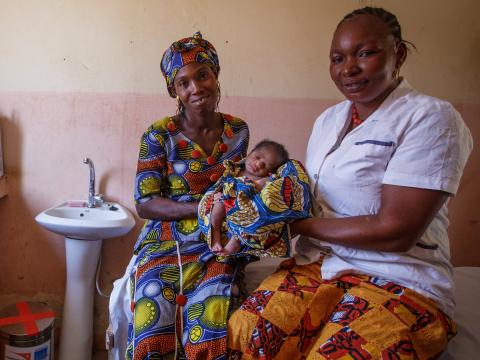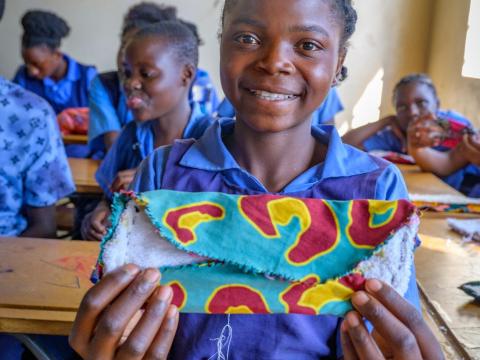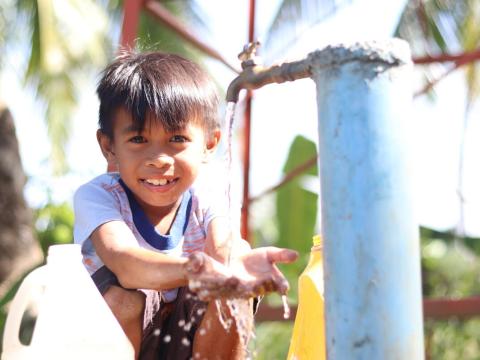
Pioneering new approaches for WASH behaviour change at scale
Research has shown that the top 20 causes of disease globally all have a significant behavioural component [1], so working to bring about behaviour change is essential to ensure the safe, effective, and sustainable use of water, sanitation and hygiene (WASH) services and to shift community norms. Yet the way people behave, their habits, are hard to change and even more challenging to sustain.
Robust behaviour-change tools like Designing for Behaviour Change (DBC) and Risks, Attitudes, Norms, Abilities, and Self-regulation (RANAS) are well supported, and a plethora of research exists examining various interventions, best practices, case studies, and innovative methods to change behaviours.
However, understanding how this research can be applied across contexts and adapted to different behaviours poses another challenge. For example, oftentimes, a multiday or multiweek course is required to train staff on how to implement a behaviour change model, followed by additional funding and time to apply this model to a particular project and behaviour in a chosen geographic area. While effective, this process is simply too resource-intensive to replicate at scale across countries, contexts, and behaviours.
There is a need for behaviour change tools that are easy to apply, can be contextualised, are scalable, and have relatively low resource requirements.
In response to this need, World Vision has developed the Rapid Behavior-Centered Design (RapidBCD) Toolkit, including a behavior-change practical implementation guide, behaviour-specific evidence summaries, and the RapidBCD Tool. To support uptake and implementation, World Vision is rolling out a series of 2-hour workshops that introduce the tools and quickly build field capacity to start integrating behaviour change principles. The toolkit has been piloted in seven countries so far, and two evidence summaries have been published: one for handwashing, and one for latrine construction and use, that summarise health evidence and map evidence-based interventions across the RapidBCD Tool.
How is this toolkit different from others?
- It is light-touch: The toolkit takes what’s known globally (succinctly compiled in our evidence summaries) and contextual knowledge (local norms, behavioural motives, and other experiences) and condenses it into a simple framework to produce a straightforward action plan.
- It is adaptable: Focused approaches like RANAS or DBC can overemphasise tools that are often too cumbersome for World Vision to deploy in standard programming. Oftentimes, different tools are called for in different situations, adding to the complexity and time-burden of determining which tools to use on a case-by-case basis. The RapidBCD Toolkit removes this step by adapting to situational needs. Its simplistic structure allows for nuance in program design and implementation.
- It is an entry point: The toolkit is designed to be an entry point to integrating behaviour change. Since the toolkit is delivered in a 2-hour workshop format and not a longer training or multiweek course, it can stand alone and kickstart capacity building in behaviour change or serve as a jumping off point giving direction for next steps. Additional tools or workshops can be layered on when resources allow or where conditions require deeper investigation into behavioral motives.
The RapidBCD Toolkit in Action
In Indonesia, staff identified a need to prioritise safe child faeces disposal (SCFD) in two programme areas, Sekadau and Simokerto. Data from a World Vision Indonesia Program Review (2021) revealed that 65.18% and 70.53% of households in Sekadau and Simokerto, respectively, did not safely dispose of child faeces. Despite many households moving up the sanitation ladder and building household latrines, the prevalence of child faeces in the environment around the household prevents a community from reaching Open Defecation Free status.
Having participated in a 2-hour behaviour-change workshop targeting SCFD, our World Vision Indonesia team determined that they needed to conduct more extensive formative research to understand the barriers and enablers to SCFD in these two programme areas, and better understand which myths and misconceptions existed among households. The workshop helped the team identify what questions they needed to be asking, and the toolkit assisted in choosing a relevant formative research mechanism.
Utilising the RapidBCD Tool, the team identified natural WASH motives associated with SCFD to tailor their intervention design and craft messages for behaviour-change communication materials targeting primary caregivers. For example, social norms around SCFD were not as influential to behaviour in rural areas, leading project staff to shift messaging towards individual motives such as nurture, prioritising a caregiver’s role in raising a healthy child rather than how a caregiver is perceived by others.
Achieving greater impact through behaviour change
World Vision is continuing to disseminate this toolkit and strengthen behaviour-change capacity across our global organisation. We are actively refining guidance to meet the needs of field staff and producing evidence summaries for all eight essential WASH behaviours. World Vision is committed to equipping staff to effectively and efficiently empower those we serve to achieve greater well-being through WASH behaviour change.
- Learn more about World Vision’s approaches to behavior change here
- Learn more info on the behaviour-centered design approach here
Sidney Shea is a WASH Programme Manager at World Vision in the United States, a graduate of Tulane University’s School of Public Health and Tropical Medicine with a master’s in International Health and Development and a concentration in Disaster Management. Her professional interests include disaster risk reduction, refugee health, GIS mapping, and water, sanitation and hygiene (WASH). Her interest in WASH largely stems from her semester in Khon Kaen, Thailand working with community activist groups and local NGOs to protect vulnerable communities from environmentally harmful mining corporations and factories that were polluting water sources, draining local ponds and lakes, and disrupting community water infrastructure. She also worked with a local NGO in Savar, Bangladesh to help implement sustainable handwashing stations during the COVID-19 pandemic.
1. V. Curtis and R. Aunger, “Motivational Mismatch: Evolved Motives as the Source of-and Solution to-Global Public Health Problems.” Applied Evolutionary Psychology, 2012, pp. 259-75.


